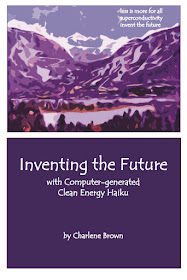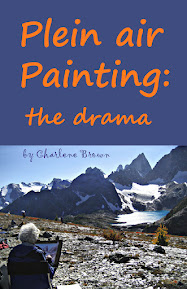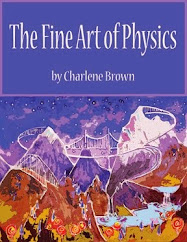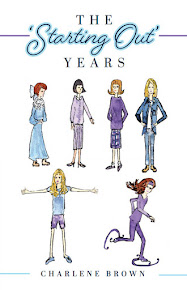watercolour, crayon and Photoshop™
©2023 Charlene Brown
In my August 27blog post, after exactly a year of not writing anything on my blog, I wrote, “At this point I’m going to pick up where I left off on the unfinished projects in my 'Plan for 1150 Words in 2022' as if it had been written in January 2023.”
Here’s how that worked out:
Graphic Novel: I have stylized some
of my representational landscapes to use as backgrounds for the book’s
illustrations, added people and conversation ‘balloons’ to these stylized
backgrounds, and published ‘By-election in Exceptional Pass’ in mid-November.
Paint Every Mountain: I have almost finished a
small book about hiking and painting in mountains all over the world,
working with what I have found to be the only truly portable plein air ‘painting’ kit, a bag of crayons. The above painting of Maroon Bells will be included
in the section of the book on specific colours.
Creative Archaeology: I have continued to build the series ‘Time
Travel with a Bag of Crayons’ equipped with the same plein
air painting kit I used for ‘Paint Every Mountain.’ The series, now in chronological order, will
include some of the photos and sketches I produced during past
archaeology-related travel with the Art Gallery of Greater Victoria and the
University of Victoria travel study program.
Predictive Analytics: I have painted several illustrations of the climate
effects of the Anthropocene. Some are straight-up
landscapes and others are interpretations/extrapolations of data relating to Greenhouse
Gas (GHG) emissions.
*Maroon Bells: According to
the U.S. Forest Service, these Colorado mountains received their distinctive
maroon coloring from the weathering of hematite. I don’t recall that they were
particularly maroon-looking. In fact
they were kind of liver-coloured until I applied some mauve crayon.



















